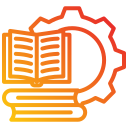Assessment That Guides Learning
Use online quizzes with immediate feedback, quick polls, or short reflections to surface misconceptions before class. Keep stakes low to encourage risk-taking. Bring the results to in-person sessions to group students strategically. Share your platform, and we will suggest question types that fit your goals.
Assessment That Guides Learning
Ask students to create products that matter: a tutorial, a data story, a community proposal. Blend online research with in-person critique cycles. Authentic tasks build transfer and pride. Comment with your subject, and we will brainstorm a compelling performance task and rubric anchors.



